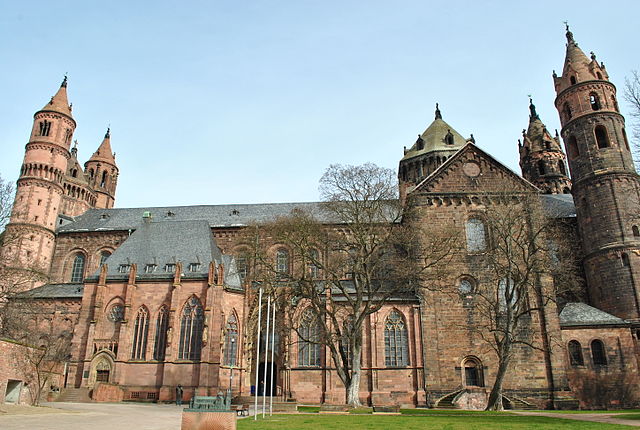Top Qs
Timeline
Chat
Perspective
Prince-Bishopric of Worms
Ecclesiastical principality of the Holy Roman Empire From Wikipedia, the free encyclopedia
Remove ads
The Prince-Bishopric of Worms was an ecclesiastical principality of the Holy Roman Empire. Located on both banks of the Rhine around Worms just north of the union of that river with the Neckar, it was largely surrounded by the Electorate of the Palatinate. Worms had been the seat of a bishop from Roman times. From the High Middle Ages on, the prince-bishops' secular jurisdiction no longer included the city of Worms, which was an Imperial Free City (the Free Imperial City of Worms) and which became officially Protestant during the Reformation. The prince-bishops however retained jurisdiction over the Cathedral of Worms inside the city.
This article relies largely or entirely on a single source. (December 2009) |

During the Worms massacre in 1096, Bishop Adalbert II attempted to protect the city’s Jewish community by sheltering them in his palace, but his attempt to protect them were ultimately unsuccessful.
In 1795 Worms itself, as well as the entire territory of the prince-bishopric on the left bank of the Rhine, was occupied and annexed by France. In the wake of the territorial reorganizations that came with the German mediatization of 1802, the remaining territory of the bishopric, along with that of nearly all the other ecclesiastical principalities, was secularized. In this case, it was annexed by Hesse-Darmstadt.
Remove ads
Bishops of Worms, 770—1802
|
|
|
Remove ads
References
External links
Wikiwand - on
Seamless Wikipedia browsing. On steroids.
Remove ads


